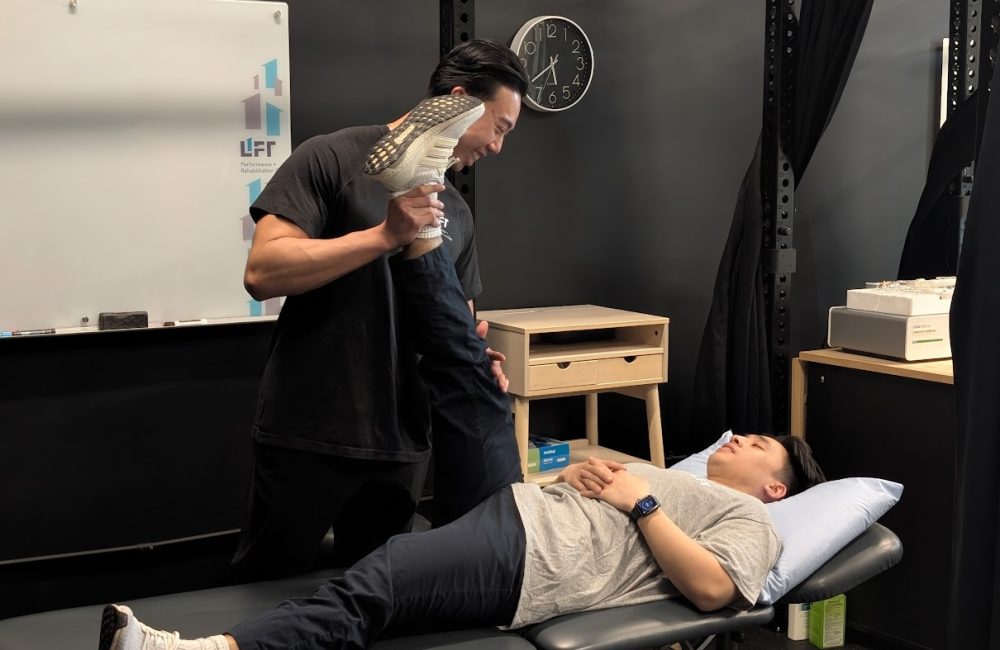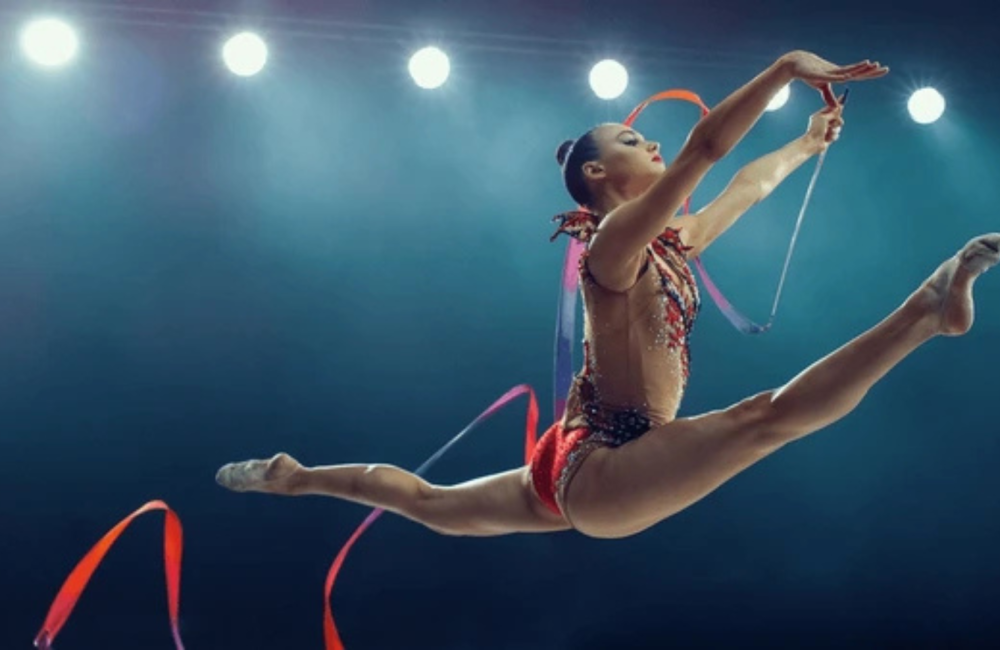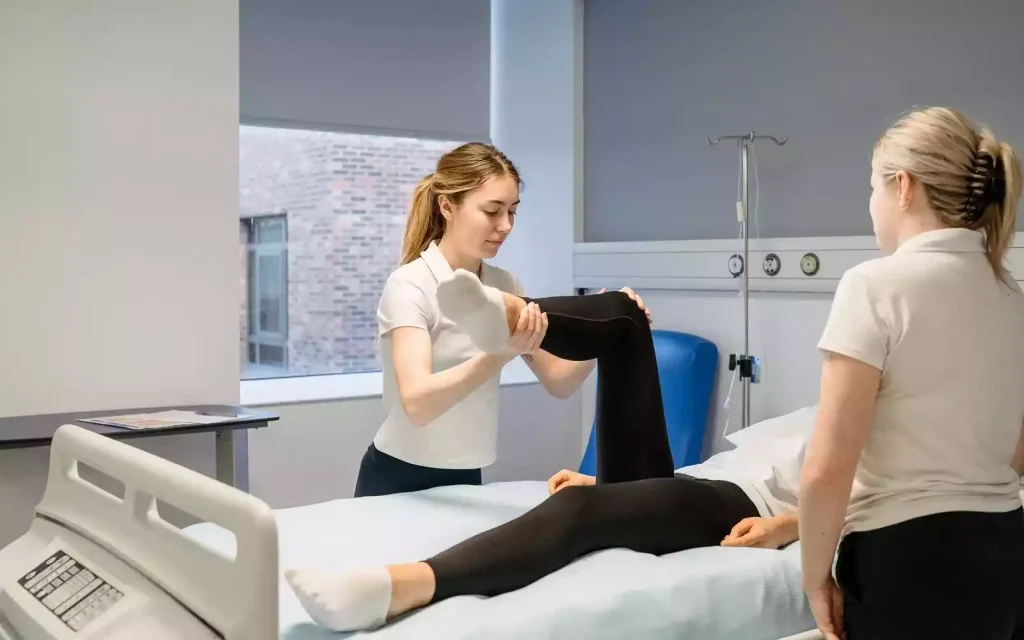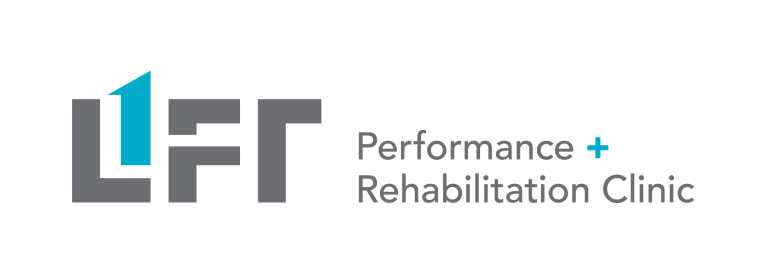Whether you’re a rhythmic gymnast, figure skater, dancer, or any athlete training hard for flexibility — there’s something important you should know about low back pain.
A recent study of Japanese collegiate rhythmic gymnasts found that over 25% experienced low back pain — and it wasn’t due to tight muscles. Instead, the most significant risk factors were imbalances in strength and mobility, especially on the nondominant side.
Here’s what that means for you — and how small adjustments to your training or rehab approach can make a big difference.
Flexible ≠ Balanced
In flexibility-focused sports, many athletes assume that pain means they need to stretch more. But this study flipped that assumption.
Researchers found that gymnasts with back pain tended to train more and had key imbalances, including:
- Lower hip flexor strength on the nondominant side
- Reduced external rotation (ER) mobility in the nondominant hip
So the issue wasn’t flexibility — it was asymmetry.
When one side of the body is stronger or more mobile than the other, it can place uneven stress on the spine, hips, and core. Over time, these imbalances increase the risk of injury.
In clinical practice, we also see that hip issues like these often relate to other areas — such as the pelvis or trunk. That’s why addressing only the tight or weak area might help temporarily, but won’t necessarily solve the problem. Getting to the root cause is essential.
Your Dominant Side Might Be Part of the Problem
It’s common in sport to favor one side — one leg kicks higher, one arm leads, one side rotates more easily. But when the nondominant side lags too far behind, those imbalances affect how your whole body moves.
Over time, those small differences can compound.
At Lift Clinic, we often see athletes with these patterns. With targeted strength and mobility work — particularly for the hip flexors and rotators — we see real improvements in pain, movement, and performance.
Yes, performance improves when you correct these imbalances — not just pain.

Had Back Pain Before? Don’t Ignore It
The study also showed that a history of back pain strongly predicted current pain. Pain that seems to “go away” isn’t always resolved — and can return under heavy training loads if the underlying issue isn’t addressed.
If you’ve had back pain before, it’s a sign to get assessed. A proper rehab plan can help you build resilience and avoid future flare-ups.
Simply resting and returning to training once the pain fades doesn’t count as listening to your body. Pain is a signal — and if we take the time to understand it, we can come back even stronger.

"As a high-level rhythmic gymnast, I’ve pushed my body to the limit—and I’ve had my share of back pain. Working with the team at Lift Clinic helped me understand how small imbalances were affecting my performance. They don’t just treat the pain; they helped me understand my body, build strength and symmetry to move better. Proactive care has been a useful part of my routine so that I can avoid downtime and focus on my training."
- Pari Goyal, Canadian National Team Rhythmic Gymnast
What You Can Do Now
Here are four key takeaways for flexible athletes — and the coaches and parents who support them:
1. Train for Symmetry
It’s not just about stretching — build strength and mobility on both sides, especially the nondominant side.
2. Act Early
Small imbalances often show up as mild discomfort before they become major issues. Don’t wait.
3. Get Assessed by a Specialist
Work with a physio, chiro, or coach who understands flexibility-based sports and can create a plan tailored to your body.
4. Be Proactive
If you train multiple times a week, you’ll likely face some injuries or discomfort. Ongoing care — including exercise and manual therapy — can help catch issues early and keep you training and competing at your best, year after year.
Who to See When You Need More Support
Sometimes you’ll need help beyond your training or rehab team. Here’s a quick overview:
- Family Doctor
Your go-to for referrals, imaging requests, and medication support.
- Sport Medicine Physician
Experts in athlete care and diagnostics. Great for guiding overall treatment and connecting you with the right specialists.
- Back Specialist or Surgeon
Typically a next step if conservative care hasn’t worked — not usually the first stop.
- ER Doctor
For urgent or severe back pain that limits sleep, mobility, or daily activities.

What About Imaging?
Imaging (like X-rays or MRIs) can be helpful — but it’s important to know the context.
Studies show that 50–70% of people with no back pain still have disc bulges or other findings on MRI. These results can sound alarming, even when they’re not the cause of pain.
That’s why working with someone who understands how to interpret imaging in context — alongside your movement, symptoms, and goals — is essential.
How Lift Clinic Supports Dancers, Gymnasts, and Skaters
At Lift Clinic in Vancouver, our team blends rehab and performance care for athletes in sports that demand flexibility, strength, and precision.
✅ Discover Your Strength Workshops
Learn how strength and conditioning can support flexibility, balance, and injury prevention in your sport.
✅ 1:1 Assessments with Experts
We assess hip mobility, strength asymmetries, and movement quality — so you can move better, prevent injury, and perform at your best.
And if you’re in pain, we’ll help you figure out what’s going on — and guide you toward recovery that lasts.
Final Thoughts
Low back pain is common in flexible athletes — but it doesn’t have to be with you forever.
When you understand the role of symmetry, strength, and early intervention, you can train smarter, move better, and stay healthier longer.
Ready to move better?
Book an assessment, join a workshop, or share this post with a coach, parent, or teammate who should see it. Let’s build strong, capable bodies — that move well for life.
Need support?
Book a physiotherapy assessment, Clinical Pilates session, or complimentary training consult today!
